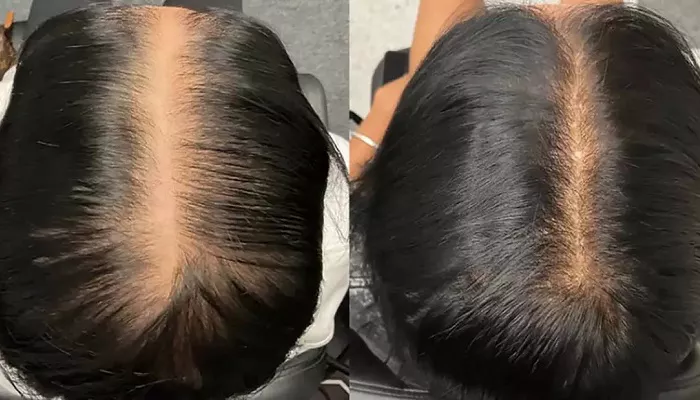In the evolving world of hair restoration, searching for “laser hair restoration near me” may no longer lead you to traditional red light therapy devices. A revolutionary treatment that forgoes lasers altogether is reshaping how patients approach hair regrowth without surgery.
This innovative method, known as TransEpidermal Energy Delivery (TED), uses ultrasound-based sound waves to stimulate the scalp and deliver potent growth factors directly to hair follicles. Unlike older low-level laser therapy (LLLT), TED requires no needles, no incisions, and boasts zero downtime—transforming the hair restoration landscape.
Dr. Ghiyam, an expert in noninvasive hair treatments at SimiDoctors, highlights the significance: “TED offers men and women a pain-free alternative to surgical procedures, promoting real hair growth with minimal discomfort.” Clinical data supports these claims, with 98% of patients experiencing reduced hair shedding within two weeks and an average 40% increase in hair density after just three sessions.
Beyond convenience, TED presents a compelling option when considering hair transplant cost and recovery. While traditional hair transplant surgeries can range between $20,000 to $30,000 and involve lengthy recovery periods marked by scabbing and visible signs, TED sessions cost approximately $1,200 each or $2,900 for a package of three—with maintenance visits every six to nine months. The absence of surgical downtime makes this approach especially appealing to those hesitant about invasive procedures.
For many experiencing early-stage thinning or receding hairlines, TED provides an effective needle-free alternative, particularly for women who often have limited surgical options. Moreover, patients who have undergone hair transplant surgery can use TED post-operatively to improve graft survival and enhance hair transplant before and after results.
Experts emphasize that maintaining results involves addressing underlying causes such as hormonal imbalance or stress, with personalized plans incorporating supportive therapies to prevent further loss.
As noninvasive technologies like TED continue to advance, they represent a promising future for individuals seeking effective, low-risk hair restoration without the extended recovery associated with traditional surgery.
Related Topics:
- How Does FUE Transplant Work? A Comprehensive Guide
- What is the Most Attractive Hairline? A Comprehensive Guide
- How Long Does FUE Take to Grow? A Comprehensive Guide


